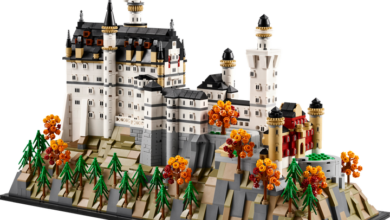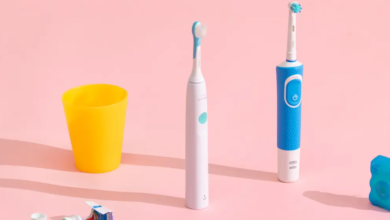Boat Enclosures: The Ultimate Guide to Comfort, Protection, and Style

Boat enclosures are a valuable addition to any vessel, providing shelter, protection, and enhanced functionality. Whether you’re protecting passengers from harsh weather, creating a private space, or simply improving the aesthetics of your boat, enclosures are a versatile solution. This guide explores everything you need to know about boat enclosures, including their types, benefits, materials, and maintenance tips.
Boat enclosures are custom-made covers or structures designed to shield a boat’s cockpit, deck, or other areas from environmental elements. They typically consist of a sturdy frame covered with marine-grade fabric and transparent panels, such as vinyl or acrylic, to provide visibility and protection.
Benefits of Boat Enclosures
1. Weather Protection
- Shields against rain, wind, sun, and snow, ensuring comfort in all seasons.
- UV-resistant materials protect passengers and the boat’s interior from sun damage.
2. Extended Boating Season
- Enclosures make it possible to enjoy boating during colder months or in unpredictable weather conditions.
3. Increased Comfort
- Keeps the cockpit or cabin warm during chilly weather and ventilated during hot conditions.
4. Added Privacy
- Enclosures create a private space for relaxation or socializing while docked or anchored.
5. Improved Aesthetics
- Enhances the visual appeal of the boat with sleek designs and finishes.
6. Enhanced Resale Value
- A well-maintained enclosure can increase the resale value of the boat by improving its functionality and appearance.
Types of Boat Enclosures
Boat enclosures come in various designs, catering to different needs and vessel types:
1. Full Enclosures
- Covers the entire cockpit or deck area.
- Provides maximum protection from weather and adds usable living space.
2. Bimini Tops with Enclosures
- Includes a bimini top for shade and additional panels for full enclosure when needed.
- Popular for open-deck boats and smaller vessels.
3. Hardtop Enclosures
- Features a solid roof structure with removable side panels.
- Offers durability and long-lasting protection, often used in larger boats and yachts.
4. Convertible Enclosures
- Modular design allows you to convert between partial and full enclosures.
- Flexible and versatile, suitable for varying weather conditions.
5. Dodgers
- Small enclosures placed over the companionway to protect from splashes and wind.
- Commonly used in sailboats.
Materials Used in Boat Enclosures
1. Marine-Grade Fabrics
- Sunbrella: Known for its durability, UV resistance, and variety of colors.
- Vinyl-Coated Polyester: Waterproof and easy to clean.
- Acrylic: Stylish and weather-resistant, ideal for long-term use.
2. Clear Panels
- Strataglass: A premium choice offering excellent clarity and scratch resistance.
- Eisenglass: A budget-friendly option with good visibility but less durability than Strataglass.
- Polycarbonate: Provides rigidity, strength, and long-lasting transparency.
3. Frames
- Made of stainless steel or aluminum for durability and corrosion resistance.
How to Choose the Right Boat Enclosure
Selecting the right boat enclosure involves several considerations:
1. Boat Type and Size
- Ensure the enclosure is tailored to fit your boat’s specific dimensions and design.
2. Purpose
- Determine the primary use: weather protection, privacy, or extended functionality.
3. Material Durability
- Choose materials suited for your boating environment, such as saltwater-resistant fabrics for marine settings.
4. Ease of Installation
- Opt for enclosures with user-friendly designs if you plan to install or remove them frequently.
5. Budget
- Prices vary based on materials, customization, and design complexity. Balance quality with affordability.
Maintenance Tips for Boat Enclosures
Proper care ensures your enclosure remains functional and visually appealing for years:
1. Regular Cleaning
- Wash fabric and panels with mild soap and water. Avoid harsh chemicals that could damage the material.
2. Prevent Mold and Mildew
- Ensure the enclosure is completely dry before storage to prevent mold growth.
3. Inspect Seams and Zippers
- Regularly check for wear and tear on seams, zippers, and fasteners. Lubricate zippers to prevent corrosion.
4. Avoid Scratches on Clear Panels
- Use soft cloths and non-abrasive cleaners to clean vinyl or acrylic panels.
5. Store Properly
- When not in use, store the enclosure in a cool, dry place to prevent UV and weather damage.
Custom vs. Pre-Made Boat Enclosures
Custom Enclosures
- Tailored to fit your boat perfectly.
- Offers a wide range of material and design choices.
- Higher cost but ensures optimal functionality and aesthetics.
Pre-Made Enclosures
- Cost-effective and readily available.
- Limited to standard sizes and designs.
- Best for budget-conscious boaters with standard-sized vessels.
Trends in Boat Enclosure Design
1. High-Tech Materials
- Enclosures are now being made with advanced, weather-resistant fabrics and coatings for longevity.
2. Modern Aesthetics
- Sleek, minimalistic designs with neutral tones and clean lines are trending.
3. Smart Features
- Integration of features like solar panels or automated opening systems is gaining popularity.
Conclusion
Boat enclosures are a practical investment that enhances the comfort, protection, and functionality of your vessel. Whether you’re seeking shelter from the elements, extending your boating season, or upgrading the aesthetics of your boat, there’s an enclosure to meet your needs. By choosing high-quality materials, maintaining your enclosure, and considering custom designs, you can enjoy the benefits of a stylish and durable solution for years to come.




